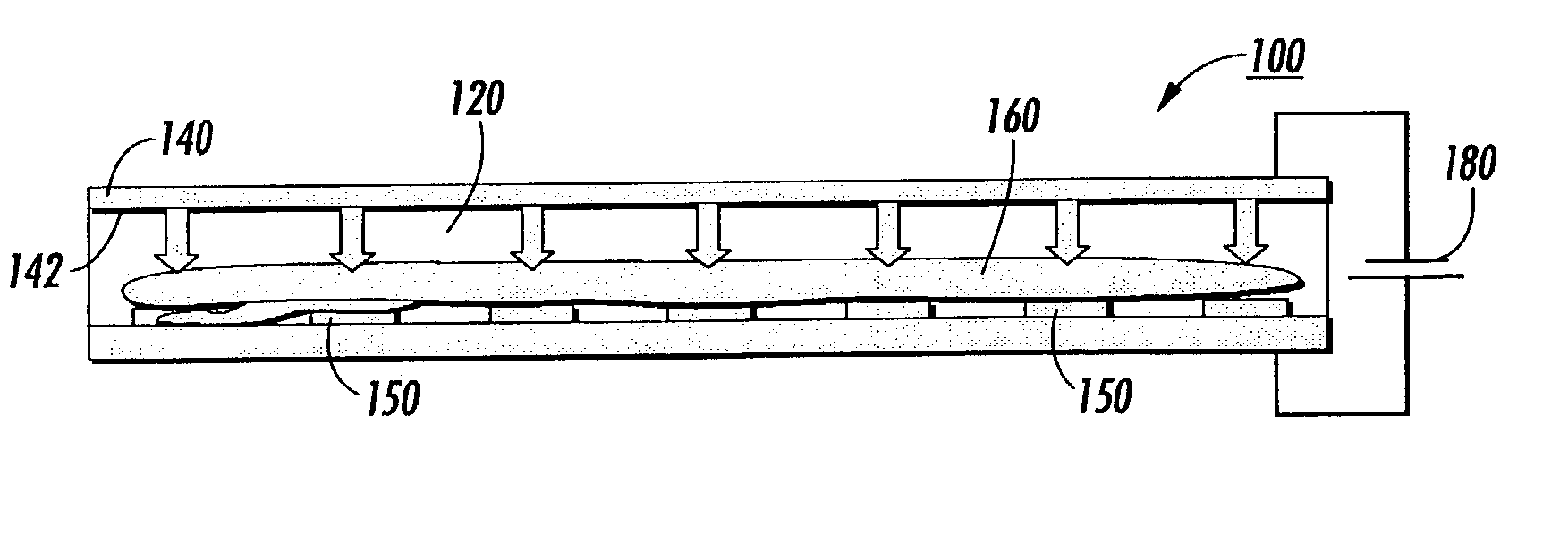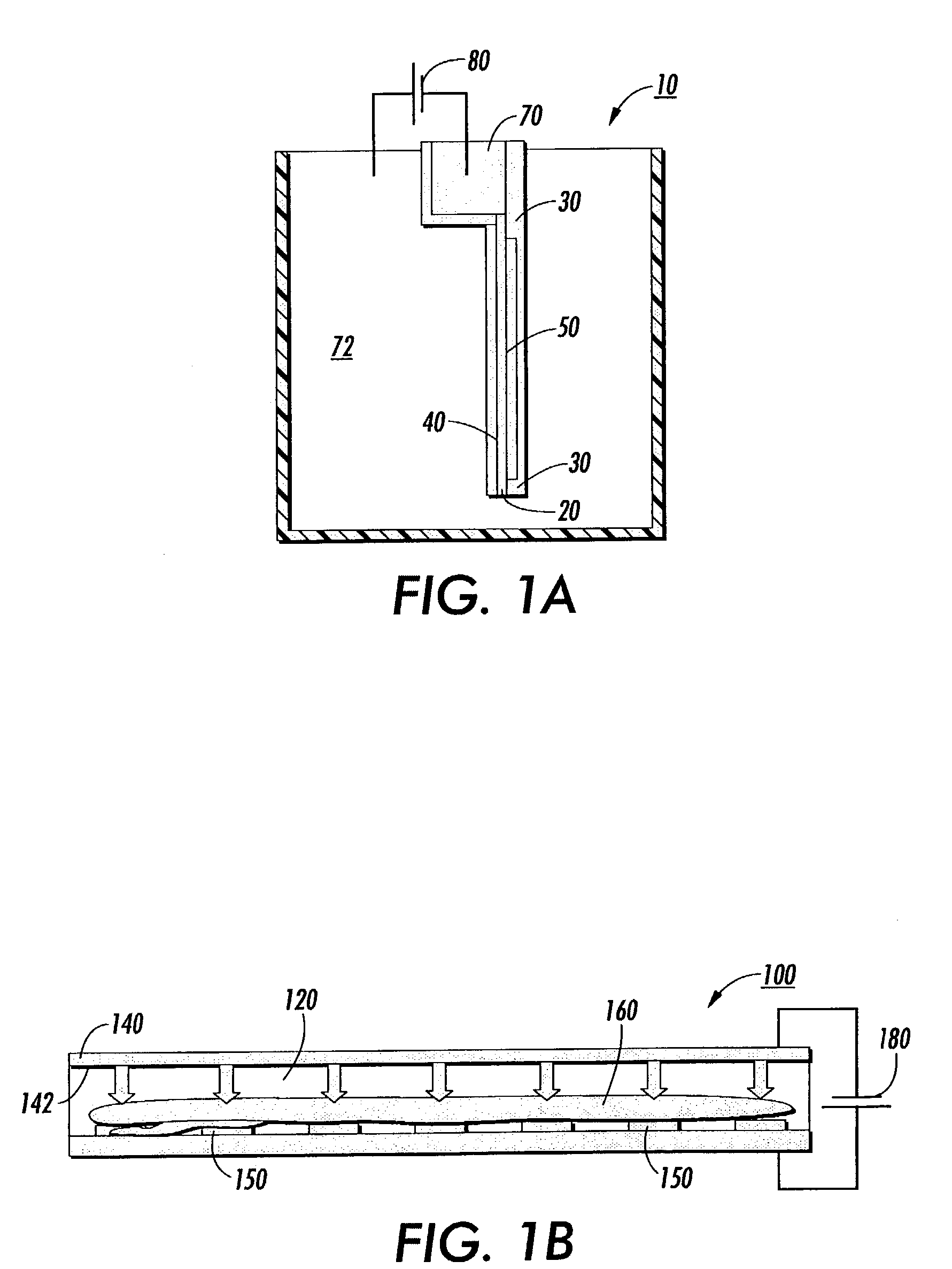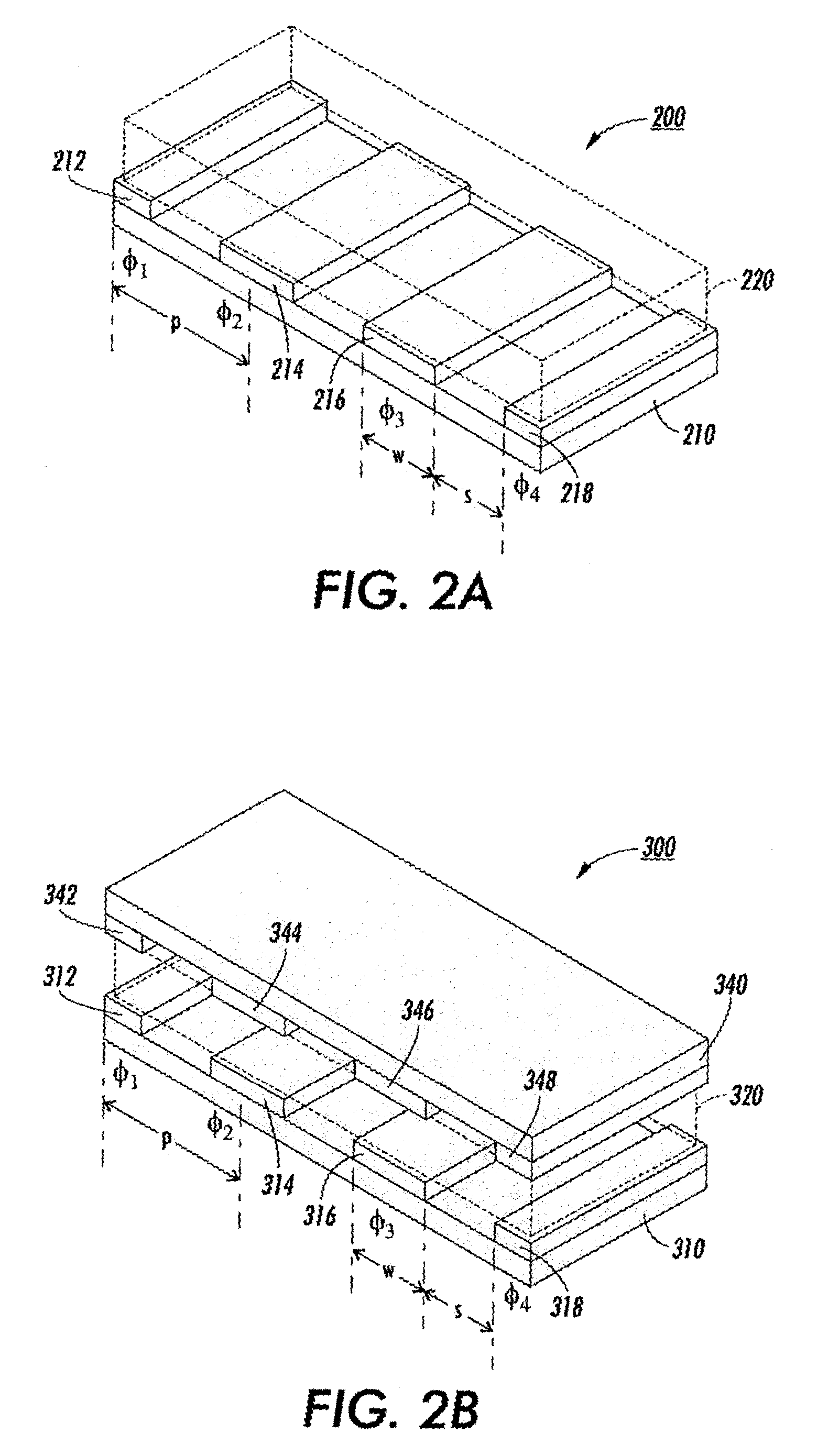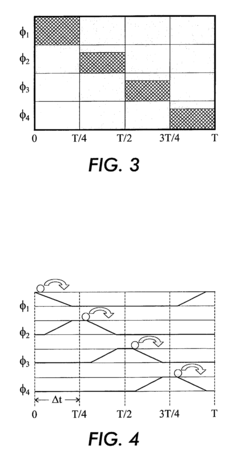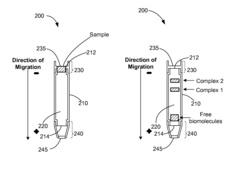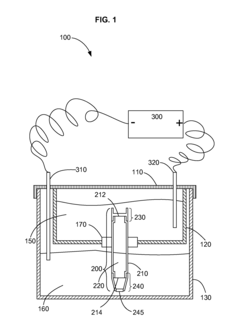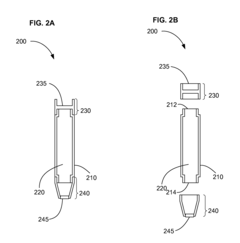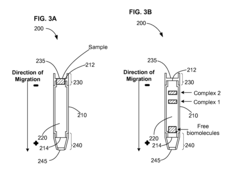Gel Electrophoresis and Its Role in Disease Pathology
Gel Electrophoresis Evolution and Objectives
Gel electrophoresis has evolved significantly since its inception in the 1930s, becoming a cornerstone technique in molecular biology and disease pathology. Initially developed for protein separation, the method has undergone numerous refinements and adaptations to meet the growing demands of scientific research and clinical diagnostics.
The evolution of gel electrophoresis can be traced through several key milestones. In the 1950s, the introduction of paper electrophoresis marked a significant advancement, allowing for better separation of proteins. The 1960s saw the development of polyacrylamide gel electrophoresis (PAGE), which dramatically improved resolution and reproducibility. The 1970s brought about the revolutionary technique of sodium dodecyl sulfate-polyacrylamide gel electrophoresis (SDS-PAGE), enabling protein separation based on molecular weight.
A major breakthrough came in the 1980s with the advent of pulsed-field gel electrophoresis (PFGE), which allowed for the separation of large DNA molecules. This technique proved invaluable in genomic studies and bacterial typing. The 1990s witnessed the rise of capillary electrophoresis, offering high-throughput capabilities and automation potential.
In recent years, the focus has shifted towards miniaturization and integration with other analytical techniques. Microchip electrophoresis and lab-on-a-chip devices have emerged, promising faster analysis times and reduced sample volumes. These advancements have been particularly beneficial in point-of-care diagnostics and personalized medicine applications.
The primary objectives of gel electrophoresis in disease pathology are multifaceted. Firstly, it aims to provide accurate and reliable separation of biomolecules, such as proteins, nucleic acids, and their fragments. This separation is crucial for identifying specific disease markers, genetic mutations, or protein abnormalities associated with various pathological conditions.
Secondly, gel electrophoresis strives to enhance sensitivity and specificity in detecting disease-related molecules. This is particularly important in early disease detection and monitoring treatment efficacy. The technique's ability to resolve complex mixtures of biomolecules makes it an indispensable tool in understanding disease mechanisms and developing targeted therapies.
Another key objective is to improve the speed and efficiency of analysis. As healthcare moves towards rapid diagnostics and personalized medicine, there is a growing need for faster, more streamlined electrophoresis techniques. This has led to the development of high-throughput systems and automated analysis platforms.
Lastly, gel electrophoresis aims to integrate seamlessly with other analytical and diagnostic methods. The goal is to create comprehensive, multi-modal approaches to disease diagnosis and monitoring, combining electrophoresis with techniques such as mass spectrometry, immunoassays, and next-generation sequencing.
Market Demand for Molecular Diagnostics
The molecular diagnostics market has experienced significant growth in recent years, driven by the increasing prevalence of chronic and infectious diseases, advancements in genomic and proteomic technologies, and the rising demand for personalized medicine. Gel electrophoresis, as a fundamental technique in molecular biology, plays a crucial role in this expanding market, particularly in disease pathology applications.
The global molecular diagnostics market is projected to continue its upward trajectory, with a compound annual growth rate (CAGR) expected to remain strong over the next five years. This growth is fueled by the growing adoption of point-of-care testing, the emergence of novel biomarkers, and the increasing focus on early disease detection and prevention.
In the context of disease pathology, gel electrophoresis serves as an essential tool for the separation and analysis of DNA, RNA, and proteins. Its applications in molecular diagnostics include genetic disorder screening, cancer diagnosis and monitoring, infectious disease detection, and pharmacogenomics. The technique's ability to provide high-resolution separation of biomolecules makes it invaluable in identifying genetic mutations, analyzing gene expression patterns, and detecting specific disease markers.
The COVID-19 pandemic has further accelerated the demand for molecular diagnostic technologies, including gel electrophoresis-based methods. The technique has been widely used in the development and validation of PCR-based diagnostic tests for SARS-CoV-2, contributing to the rapid expansion of testing capabilities worldwide.
Emerging trends in the molecular diagnostics market that are likely to impact the use of gel electrophoresis include the growing popularity of next-generation sequencing (NGS) technologies, the development of multiplex assays, and the integration of artificial intelligence and machine learning in data analysis. While these advancements may present challenges to traditional gel electrophoresis methods, they also create opportunities for innovation in gel-based techniques.
The increasing focus on precision medicine and companion diagnostics is expected to drive further demand for molecular diagnostic tools, including advanced gel electrophoresis systems. As healthcare providers and pharmaceutical companies seek to develop targeted therapies based on individual genetic profiles, the need for accurate and reliable biomolecule separation and analysis techniques will continue to grow.
In conclusion, the market demand for molecular diagnostics, particularly in the field of disease pathology, presents significant opportunities for gel electrophoresis technologies. As the industry evolves, there will be a continued need for improvements in speed, sensitivity, and automation of gel electrophoresis techniques to meet the growing demands of clinical and research applications in molecular diagnostics.
Current Challenges in Gel Electrophoresis Techniques
Gel electrophoresis remains a cornerstone technique in molecular biology and disease pathology, yet it faces several challenges that limit its effectiveness and reliability. One of the primary issues is the lack of standardization across laboratories, leading to inconsistent results and difficulties in comparing data from different sources. This variability stems from differences in equipment, reagents, and protocols used by different research groups.
Another significant challenge is the limited resolution of traditional gel electrophoresis techniques, particularly when dealing with complex biological samples. As research in disease pathology becomes increasingly focused on subtle genetic variations and low-abundance biomarkers, the need for higher resolution separation becomes more critical. Current gel systems often struggle to distinguish between closely related DNA or protein fragments, potentially missing crucial information in disease studies.
The time-consuming nature of gel electrophoresis poses another hurdle, especially in clinical settings where rapid diagnosis is essential. The process of gel preparation, sample loading, running the electrophoresis, and subsequent analysis can take several hours to days, depending on the application. This delay can be problematic in time-sensitive situations, such as identifying pathogens in infectious diseases or monitoring treatment responses in cancer patients.
Sample degradation during the electrophoresis process is an ongoing concern, particularly for sensitive biological molecules. Prolonged exposure to electric fields and buffer conditions can lead to protein denaturation or DNA fragmentation, potentially altering the results and leading to misinterpretation of data. This is especially problematic when studying unstable disease biomarkers or analyzing post-translational modifications in proteins.
The limited quantitative capabilities of traditional gel electrophoresis techniques present another challenge. While gels can provide semi-quantitative information, precise quantification of specific molecules within complex mixtures remains difficult. This limitation hampers efforts to establish accurate biomarker thresholds for disease diagnosis and prognosis.
Automation and reproducibility are areas where gel electrophoresis lags behind other analytical techniques. The manual nature of many gel electrophoresis protocols introduces operator-dependent variability, affecting the consistency of results across different experiments or laboratories. This lack of automation also limits the throughput of the technique, making it less suitable for large-scale studies or high-volume clinical applications.
Environmental concerns and safety issues associated with some gel electrophoresis reagents, such as ethidium bromide for DNA staining, pose additional challenges. There is a growing need for safer, more environmentally friendly alternatives that maintain or improve upon the sensitivity and effectiveness of current staining methods.
State-of-the-Art Gel Electrophoresis Methods
01 Gel composition and preparation
Various gel compositions and preparation methods are used in gel electrophoresis. These include specific formulations of agarose, polyacrylamide, or other polymers to create gels with desired properties for separation of molecules. The composition and preparation of the gel can be optimized for different applications, such as DNA or protein separation.- Gel composition and preparation: Various gel compositions and preparation methods are used in gel electrophoresis. These include specific formulations of agarose or polyacrylamide gels, as well as techniques for creating gradient gels. The composition and preparation of the gel matrix are crucial for achieving optimal separation of biomolecules based on their size and charge.
- Electrophoresis apparatus design: Innovations in electrophoresis apparatus design focus on improving efficiency, reproducibility, and ease of use. These designs may include features such as integrated cooling systems, adjustable voltage controls, and specialized buffer chambers. Some apparatuses are designed for specific applications, such as DNA sequencing or protein analysis.
- Detection and imaging techniques: Advanced detection and imaging techniques are employed to visualize and analyze the separated biomolecules after gel electrophoresis. These may include fluorescence-based detection, chemiluminescence, or colorimetric methods. Some systems incorporate real-time imaging capabilities or automated analysis software to enhance data interpretation.
- Sample preparation and loading: Improved methods for sample preparation and loading aim to enhance the resolution and reproducibility of gel electrophoresis. These techniques may involve specialized buffer formulations, sample concentration methods, or novel loading mechanisms to ensure uniform sample application and migration within the gel.
- Specialized electrophoresis techniques: Various specialized electrophoresis techniques have been developed for specific applications or to improve separation efficiency. These may include pulsed-field gel electrophoresis, capillary electrophoresis, or two-dimensional gel electrophoresis. Each technique offers unique advantages for separating different types of biomolecules or addressing specific analytical challenges.
02 Electrophoresis apparatus design
Innovations in electrophoresis apparatus design focus on improving efficiency, resolution, and ease of use. This includes developments in electrode configurations, buffer systems, and overall device structure. Some designs incorporate features for automated sample loading, temperature control, or integration with other analytical techniques.Expand Specific Solutions03 Detection and imaging systems
Advanced detection and imaging systems are developed to visualize and analyze the separated molecules in gel electrophoresis. These may include fluorescence-based detection, UV illumination, or integration with mass spectrometry. Some systems offer real-time monitoring of the separation process or automated image analysis for quantification.Expand Specific Solutions04 Microfluidic and miniaturized systems
Miniaturization of gel electrophoresis systems allows for reduced sample volumes, faster analysis times, and potential integration with lab-on-a-chip devices. These microfluidic systems often incorporate novel materials or fabrication techniques to achieve high-resolution separations at a smaller scale.Expand Specific Solutions05 Specialized applications and modifications
Modifications to traditional gel electrophoresis techniques are developed for specialized applications. These may include pulsed-field gel electrophoresis for large DNA molecules, 2D gel electrophoresis for complex protein mixtures, or adaptations for specific types of biomolecules. Some innovations focus on improving the resolution or speed of separation for particular classes of molecules.Expand Specific Solutions
Key Players in Electrophoresis Industry
The gel electrophoresis market for disease pathology is in a mature growth phase, with a global market size estimated to exceed $1 billion. The technology's maturity is evident from its widespread adoption in clinical and research settings. Key players like Life Technologies Corp., Agilent Technologies, and Bio-Rad Laboratories dominate the market with advanced systems and reagents. These companies continually innovate to improve resolution, speed, and automation. Emerging players such as Ventana Medical Systems and Pierce Biotechnology are focusing on niche applications and specialized reagents, driving further market expansion. The competitive landscape is characterized by a mix of established giants and innovative startups, fostering continuous technological advancements in gel electrophoresis for disease pathology applications.
Agilent Technologies, Inc.
Bio-Rad Laboratories, Inc.
Innovative Approaches in Disease Pathology Detection
- The implementation of a gel electrophoretic system utilizing electrostatic traveling waves with embedded traveling wave grids on both sides of the gel, optimized for enhanced protein loading and transport, reduces processing time and band broadening, and improves resolution and reproducibility by creating higher field strengths with lower voltages.
- The method involves loading a sample containing free biomolecules and complexes onto an electrophoresis gel, applying an electric current to separate the free biomolecules from the complexes, and then reversing the current direction to collect the complexes of interest, using a semi-permeable membrane to retain the biomolecules of interest, thus masking inhomogeneity and concentrating them for analysis.
Regulatory Framework for Diagnostic Technologies
The regulatory framework for diagnostic technologies, including gel electrophoresis in disease pathology, is a complex and evolving landscape. In the United States, the Food and Drug Administration (FDA) plays a central role in overseeing the development, approval, and marketing of diagnostic tests. The FDA classifies in vitro diagnostic devices (IVDs) into three categories based on their risk level and intended use, with gel electrophoresis-based tests typically falling under Class II or III.
For gel electrophoresis applications in disease pathology, manufacturers must navigate the premarket notification (510(k)) process or, in some cases, the more rigorous premarket approval (PMA) pathway. The 510(k) submission requires demonstrating substantial equivalence to a predicate device, while PMA demands comprehensive clinical data to prove safety and effectiveness.
The Clinical Laboratory Improvement Amendments (CLIA) of 1988 also impact the regulatory landscape for gel electrophoresis in clinical settings. CLIA regulations ensure the quality and reliability of laboratory testing, including those utilizing gel electrophoresis techniques. Laboratories must obtain CLIA certification and comply with quality control, proficiency testing, and personnel requirements.
Internationally, the regulatory framework varies, but many countries align with or reference FDA guidelines. The European Union's In Vitro Diagnostic Regulation (IVDR) has introduced more stringent requirements for diagnostic devices, including those based on gel electrophoresis. The IVDR emphasizes risk-based classification, enhanced clinical evidence, and post-market surveillance.
Regulatory bodies are increasingly focusing on the validation of diagnostic tests, particularly in the context of personalized medicine. For gel electrophoresis applications in disease pathology, this translates to heightened scrutiny of analytical and clinical validity, as well as clinical utility. Manufacturers must provide robust data on test performance, including sensitivity, specificity, and reproducibility.
The regulatory landscape also addresses quality management systems, with ISO 13485 serving as the international standard for medical device quality management. Compliance with this standard is often a prerequisite for market access in many jurisdictions, ensuring consistent quality in the production and distribution of gel electrophoresis-based diagnostic tools.
As the field of disease pathology advances, regulators are adapting to emerging technologies and methodologies. This includes considerations for novel applications of gel electrophoresis, such as microfluidic devices or high-throughput systems. The regulatory framework must balance innovation with patient safety, necessitating ongoing dialogue between industry stakeholders, researchers, and regulatory agencies.
Ethical Implications in Genetic Testing
Gel electrophoresis, a fundamental technique in molecular biology, has become an indispensable tool in genetic testing and disease diagnosis. However, its widespread use raises significant ethical concerns that must be carefully considered. One of the primary ethical implications is the potential for genetic discrimination. As gel electrophoresis enables the identification of genetic markers associated with various diseases, there is a risk that this information could be used to discriminate against individuals in employment, insurance, or other social contexts.
Privacy and confidentiality of genetic information obtained through gel electrophoresis-based tests are also major ethical concerns. The sensitive nature of genetic data necessitates robust safeguards to protect individuals from unauthorized access or misuse of their genetic information. This is particularly crucial as genetic information can reveal not only an individual's health status but also that of their family members.
The issue of informed consent in genetic testing using gel electrophoresis is another critical ethical consideration. Patients must fully understand the implications of the test results, including potential psychological impacts and the possibility of uncovering unexpected genetic information. This raises questions about the extent of information that should be disclosed and how to handle incidental findings that may have significant health implications.
The use of gel electrophoresis in prenatal genetic testing introduces complex ethical dilemmas. While it can provide valuable information about potential genetic disorders in fetuses, it also raises concerns about selective abortion and the societal implications of such practices. This intersects with broader debates about disability rights and the value placed on different human lives.
Equitable access to genetic testing technologies is another ethical challenge. The availability of gel electrophoresis-based tests may be limited by economic factors, potentially exacerbating health disparities. This raises questions about the fair distribution of healthcare resources and the responsibility of society to ensure equal access to potentially life-saving diagnostic tools.
The rapid advancement of gel electrophoresis techniques in genetic testing also presents ethical challenges related to the interpretation and communication of results. As our understanding of genetics evolves, the meaning and implications of certain genetic markers may change over time. This raises questions about the responsibility of healthcare providers to recontact patients with updated information and the potential psychological impact of changing risk assessments.
In conclusion, while gel electrophoresis has revolutionized genetic testing and disease pathology, its use necessitates careful consideration of these ethical implications. Balancing the potential benefits of genetic information with the protection of individual rights and societal values remains a complex challenge that requires ongoing dialogue and policy development in the scientific and medical communities.
